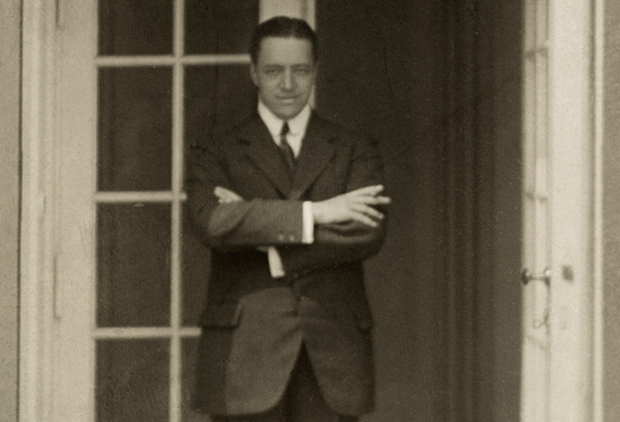Submitted by WA Contents
The story behind Mies van der Rohe’s name changes
United Kingdom Architecture News - Jul 22, 2014 - 12:20 3664 views
With his numerous name changes he joined a roll call of avant-garde artists intent on reinventing themselves

Mies in the doorway of the Riehl House, 1912
As every artist knows, the act of reinvention often begins with a name change - that simplest but most effective of rebrandings. As our Detlef Mertins book Mies reveals, Mies van der Rohe's numerous change of names early on in his career were a similar manifestation of his pride in being a ‘self-created’ man.
Along with his self-education and initiative transformation of himself from the son of a stonemason in a provincial town into a renowned architect in the cosmopolitan world of Berlin, the name changes, Mertins argues, were “evidence of the deliberateness with which the architect embarked on reshaping his identity.
It placed him amongst those in the avant-garde who had already adopted pseudonyms: Charles Édouard Jeanneret, who assumed the name Le Corbusier for his architecture while keeping Jeanneret for his art; Theo van Doesburg, who cultivated Dadaist (IK Bonset) and Constructivist (Aldo Camini) alter-egos, in addition to his De Stijl persona; Bruno Taut and his Crystal Chain circle members, who took names such as Glass, Promethius and Cor; and the Dadaists, who assumed fictive identities that mocked political institutions and normative roles. Richard Huelsenbeck (1892–1974) was known as the Meisterdada and Dadaco; Raoul Hausmann, as the Dadasoph and Director of the Dada Circus; and George Grosz (1893–1959), as the Propagandada. In German, the word mies connotes ‘wretched’, ‘miserable’ and ‘rotten’, as well as the state of feeling unwell or under the weather....Continue Reading
> via Phaidon
